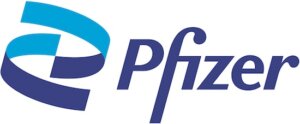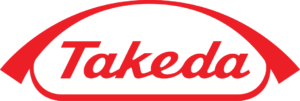So many choices: Positioning advanced therapies in Crohn’s disease
So many choices: Positioning advanced therapies in Crohn’s disease
April 30, 2024
Issue 04
Mentoring in IBD is an innovative and successful educational program for Canadian gastroenterologists that includes an annual national meeting, regional satellites in both official languages, www.mentoringinibd.com, an educational newsletter series, and regular electronic communications answering key clinical questions with new research. This issue is based on the presentation made by Dr. Miguel Regueiro, at the 24th annual national meeting, Mentoring in IBD XXIV: The Master Class, held in Toronto on November 3, 2023.
Introduction
The objectives of this presentation were to discuss first- and second-line treatment options in Crohn’s disease (CD) and consider how to personalize the therapeutic approach. In the past, treatment decisions focused on when to start an anti-tumour necrosis factor (TNF) agent, which anti-TNF to start, and what to do if the patient did not respond to an anti-TNF. Currently, with the increasing choice of advanced therapies, treatment decisions focus on when to start an advanced therapy and which therapy to start. While patients and physicians have similar considerations regarding the choice of first-line treatment options for CD, physicians tend to have more factors they take into consideration, and often will focus on different aspects than their patients (see Table 1).

When considering when to start advanced therapy, it is important to recognize the risks associated with undertreated active IBD, for instance, if a drug is chosen that has a more favourable safety profile, but is less effective, the potential safety benefit may be lost. It is also important to consider the phenotypic heterogeneity of CD, as for example, ileal ulcers tend to be more difficult to heal than colonic ulcers.1
Positioning and sequencing of advanced therapies in CD
The positioning of treatment first focuses on when to use advanced therapy i.e., early vs. later treatment. There are data demonstrating the benefits of early treatment in CD showing greater remission rates, regardless of the agent used, supporting the early use of advanced therapy in CD. However, in UC, disease duration does not seem to matter as much.2 Decisions on the sequencing of treatment in CD currently focus on whether there is a better first line alternative to anti-TNFs, and when using an anti-TNF first, what to use if it is ineffective.
Comparative efficacy
Comparative efficacy data through head-to-head randomized clinical trials can be used to inform treatment sequencing. In addition, indirect evidence of comparative efficacy can be gathered from network meta-analyses (NMA) of randomized controlled trials (RCTs) or propensity-score matched analyses of individual patient data from RCTs.
The question of the choice of first anti-TNF was investigated in luminal pediatric CD using the prospective Canadian Children IBD Network National Inception Cohort. The results indicated that more infliximab than adalimumab is used in pediatric CD. Patients who received infliximab tended to be sicker, had more extensive disease, and were more likely to use combination therapy. However, based on propensity-score matching, there was no difference in durability, and steroid-free clinical or biochemical remission between the two treatments.3
Interleukin (IL)-12/23 inhibitors and IL-23 inhibitors
The arrival of specific IL-12/23 (ustekinumab) and IL-23 (risankizumab) inhibitors caused excitement, with extensive trial data supporting their efficacy in bio-naïve patients (ustekinumab UNITI 2; risankizumab ADVANCE).4-6 In addition, a post hoc analysis of the clinical trial data for infliximab vs. ustekinumab in bio-naïve patients with CD showed comparable rates of clinical remission and response at week 6, with similar results seen with propensity-matched scoring, suggesting similar efficacy and speed of onset.7 Furthermore, a systematic review and network meta-analysis of RCTs found that risankizumab and ustekinumab performed similarly in bio-naïve patients.8
Importantly, there are now two head-to-head studies in CD, which provide the highest level of comparative evidence. The SEAVUE phase 3b trial compared ustekinumab to adalimumab in bio-naïve patients and found that both therapies were effective with a similar proportion achieving clinical remission at week 52.9 More recently, the SEQUENCE trial compared ustekinumab to risankizumab in moderate-severe CD patients with prior failure of ≥1 anti-TNF. There were more dropouts in the ustekinumab group (72.8 vs. 90.2%). Clinical remission rates at week 24 demonstrated non-inferiority of risankizumab and endoscopic remission rates at week 48 showed superiority for risankizumab (see Figure 1).10

Anti-integrins
Vedolizumab is another agent with evolving data in CD. There are trial data (GEMINI) and a recent Cochrane systematic review showed benefit in bio-naïve patients (GEMINI).11,12 However, a pooled analysis of patient data from 4 clinical trials in CD that assessed the rate of endoscopic healing at 1 year in bio-naïve patients found that anti-TNFs had superior rates to other biologics in bio-experienced patients.13 Similar results were seen in bio-experienced patients in a network metanalysis.8 However, real-world data suggest that vedolizumab performs better in clinical practice than in clinical trials.14-17
Targeted oral small molecules
Recently, the Janus kinase (JAK) inhibitor upadacitinib was added to the CD treatment armamentarium. Trial data from U-EXCEL and U-EXCEED have demonstrated a benefit in bio-naïve and bio-experienced patients for both clinical and endoscopic outcomes.18-20 In addition, the full safety analysis from the U-ENDURE study provided reassuring safety data, with only one venous thromboembolic event (VTE) reported.21
Future directions
The question of sequencing in CD has also evolved to include the potential of combining advanced therapies, which is currently being investigated in the EXPLORER trial in CD (combining vedolizumab, adalimumab, and methotrexate).22 Meanwhile, some data suggest that select patients eligible for an anti-TNF would benefit from surgery up front.23 Ideally, by using clinical factors, biomarkers, and predictive tools, precision medicine would allow stratification of patients that require a top-down, step-up, and early surgery strategies.24
Conclusions
In conclusion, sequencing of advanced treatment in CD has evolved such that first line options now include infliximab, adalimumab, risankizumab or ustekinumab, and vedolizumab. Those patients that do not respond or lose response to anti-TNFs can be switched to risankizumab, ustekinumab, or upadacitinib. For primary non-response, it is recommended to switch to risankizumab or upadacitinib, and for cases of intolerance, to switch to risankizumab or ustekinumab. For secondary loss of response related to anti-drug antibodies, it is recommended to either switch to a second anti-TNF or switch out of class, while for secondary loss of response unrelated to anti-drug antibodies, to switch to risankizumab or upadacitinib. Further studies will move us closer to the application of precision medicine in CD.
Clinical Case
- Oliver—17-year-old male you are seeing in a pediatric gastroenterology clinic
- Underwent colonoscopy two weeks ago after presenting with two-month history of:
- Crampy right lower quadrant pain
- 5 kg weight loss
- Endoscopy showed:
- Ileocolonic disease
- Deep ulcers in the last 25 cm of ileum and in the sigmoid colon
- Smaller ulcers were noted elsewhere in colon
- No perianal fistulizing disease
- Of note:
- He had been taking NSAIDs weekly for headaches over the last 3 months
- Mother mentioned Oliver quite stressed with his grade 12 school workload
Commentary
- Oliver has potentially aggressive disease, therefore most gastroenterologists would recommend up-front advanced therapy or proactively work towards advanced therapy, acknowledging that for insurance purposes, previous exposure to other agents may be required.
- When considering his treatment options, take into account his young age, deep ulcerations, and more extensive disease (extent and severity of disease).
- Other factors to consider when selecting treatment in other cases include the presence of perianal disease and extra-intestinal manifestations (EIMs), and potential for pregnancy.
- With all the options currently available, narrow the discussion to focus on what is considered the best options for that patient.
- Given Oliver has deep ulcers most gastroenterologists would choose infliximab with methotrexate (rather than azathioprine) to be more aggressive and preserve durability.
- In general, steroids should only be used if required by insurance, and just until the patient can access an advanced therapy, or in situations where there are no predictors of poor outcome.
- While infliximab and adalimumab are both approved in pediatric CD, infusion may be better to ensure adherence.
- When discussing combination therapy for infliximab, speak about the risk of anti-drug antibody formation and loss of response, and if the family is opposed, use proactive therapeutic drug monitoring (TDM) to minimize the risk of antibody formation.
- Given NSAIDS increase the risk of flare in IBD, direct patients to minimize their use, though in practice they do seem to be well tolerated by patients.
Case Evolution
- Through a process of shared decision-making, infliximab is chosen and initiated
Commentary
- For anti-TNFs, gastroenterologist tend to do proactive TDM in high-risk patients while some do it routinely in all patients.
- There is controversy in its proactive use in practice, but there is one trial that demonstrates a benefit of proactive TDM in pediatrics.
- There is less utility of TDM for newer agents, as there is a reduced risk of immunogenicity, and it is not known what trough levels to target.
- Ustekinumab may also be a good option in this case, if it is accessible, given he is leaving for school and it is dosed less frequently.
- Given the recent SEQUENCE trial results, consider the potential benefits of risankizumab over ustekinumab, unless cost is a factor.
- The SEQUENCE trial was conducted in anti-TNF failures, and no dose optimization was done, so in bio-naïve patients, many would consider ustekinumab and risankizumab equally, depending on access.
- Given the recent SEQUENCE trial results, consider the potential benefits of risankizumab over ustekinumab, unless cost is a factor.
Case Evolution
- Oliver agrees to combine his infliximab with weekly IM methotrexate
- His mother, a nurse, agrees to administer the injections
- He now attends the adult gastroenterology clinic
- Infliximab trough levels measured at week 14, targeting a level greater than 10 mcg/mL
- Infusion interval shortened to 6 weeks as trough level was 4.8 mcg/mL
- He continues to do very well clinically
- Starts university, living in residence
- Fecal calprotectin normalized to 158 mcg/g after six months
- Colonoscopy repeated after 9 months—shows only small residual ulcers in the ileum
- Colon looks normal
Commentary
- At this point in this case, given Oliver is clinically well, be cautious with switching as to not risk losing response.
- Given his age, focus more on the fact he is becoming an adult and thus treat him as a young adult noting that his age can impact access to treatment options.
- The transition to adulthood brings up additional important discussion points such as moving away for school, concerns with treatment adherence, ability to organize treatment, etc.
Case Evolution
-
- You recommend continuing both infliximab and methotrexate
- As you continue to follow Oliver you note a change at the one-year mark
- CRP (previously always normal) is up to 25 mg/L
- Hemoglobin 105
- Albumin 33 g/L.
- You contact Oliver
- He is having abdominal pain and loose stools again for the first time since initial treatment
- These symptoms improved temporarily after his last infusion
- 54-week trough level returned as undetectable with anti-infliximab antibody titre of 40
- He admits to stopping methotrexate several months earlier because he was tired of taking two drugs
- Further, he discloses:
- He is enjoying university life
- Concerned about the effects of methotrexate on his alcohol intake
- Read ‘somewhere’ that methotrexate may affect his sex life
Commentary
-
-
- At this point, gastroenterologists recommend confirming Oliver is taking his methotrexate and infliximab on schedule. If he is not, have him resume taking it, and/or increase the dose, or decrease the interval.
- Pushing the dose through low titre antibodies is an approach that was frequently applied in the past but is less appropriate now that there are multiple options.
- Many would use oral instead of intramuscular methotrexate when used as concomitant therapy.
- If using combination therapy, tell patients to expect to be on it for 1–2 years, aiming for 1 year, with confirmation of deep remission before stopping the immunomodulator.
- Given Oliver responded to infliximab, switching within class to adalimumab is a good option.
- Some data suggests if a patient forms antibodies to infliximab, they are likely to form antibodies to adalimumab, so in this case continue methotrexate combination therapy, only using adalimumab monotherapy when it is the first anti-TNF used.
- If failure is not related to anti-drug antibodies, switch out of class to an IL-23 inhibitor
- Vedolizumab is not considered a good option in anti-TNF failures—its efficacy is uncertain in the setting of failure due to anti-drug antibodies because in trials they do not provide data as to the reason for failure.
- Consider upadacitinib following anti-TNF therapy, but choose risankizumab prior to upadacitinib for safety reasons, unless the patient is needle phobic or strongly prefers oral treatment.
- At this point, gastroenterologists recommend confirming Oliver is taking his methotrexate and infliximab on schedule. If he is not, have him resume taking it, and/or increase the dose, or decrease the interval.
-
References
-
-
- Dhaliwal J, Walters TD, Mack DR, et al. Phenotypic variation in paediatric inflammatory bowel disease by age: a multicentre prospective inception cohort study of the Canadian Children IBD Network. J Crohns Colitis. 2020;14:445–54.
- Ben-Horin S, Lovack L, Mao R, et al. Efficacy of biologic drugs in short-duration versus long-duration inflammatory bowel disease: a systematic review and an individual-patient data meta-analysis of randomized controlled trials. Gastroenterology. 2022;162:482–94.
- Debruyn J, Hien H, Griffiths AM, et al. Adalimumab vs infliximab in luminal pediatric Crohn’s disease: Comparable outcomes in a prospective multicenter cohort study. Am J Gastroenterol. 2023; DOI: 1014309/ajg.0000000000002552. Online ahead of print.
- Feagan BG, Sandborn WJ, Gasink C, et al. Ustekinumab as induction and maintenance therapy for Crohn’s disease. N Engl J Med. 2016;375:1946–60.
- D’Haens G, Panaccione R, Baert F, et al. Risankizumab as induction therapy for Crohn’s disease: Results from the phase 3 ADVANCE and MOTIVATE induction trials. Lancet. 2022;399:2015–30.
- Ferrante M, Panaccione R, Baert F, et al, Risankizumab as maintenance therapy for moderately to severely active Crohn’s disease: results from the multicentre, randomised, double-blind, placebo-controlled, withdrawal phase 3 FORTIFY maintenance trial. Lancet. 2022;399:2031–46.
- Narula N, Wong ECL, Dulai OS, et al. Comparative efficacy and rapidity of action for infliximab vs ustekinumab in biologic naïve Crohn’s disease. Clin Gastro Hepatol. 2022;20:1579–87.
- Singh S, Murad MH, Fumery M, et al. Comparative efficacy and safety of biologic therapies for moderate-to-severe Crohn’s disease: A systematic review and network meta-analysis. Lancet Gastroenterol Hepatol. 2021;6:1002–14.
- Sands BE, Irving PM, Hoops T, et al Ustekinumab versus adalimumab for induction and maintenance therapy in biologic-naive patients with moderately to severely active Crohn’s disease: a multicentre, randomised, double-blind, parallel-group, phase 3b trial. Lancet. 2022;399:2200–11.
- Peyrin-Biroulet L, Chapman JC, Colombel J-F, et al. Risankizumab versus ustekinumab for patients with moderate to severe Crohn’s disease: Results from the phase 3b SEQUENCE Study. UEG J 2023;11 (Supplement 8).
- Sandborn WJ, Feagan BG, Rutgeerts P, et al. Vedolizumab as induction and maintenance therapy for Crohn’s disease. N Engl J Med. 2013;369:711–21.
- Hui S, Sinopoulou V, Gordon M, et al. Vedolizumab for induction and maintenance of remission in Crohn’s disease. Cochrane Database Sys Reviews. 2023;7:CDO13611.
- Narula N, Wong E, Dulai P, et al. Comparative Effectiveness of Biologics for Endoscopic Healing of the Ileum and Colon in Crohn’s Disease. Am J Gastroenterol. 2022;117:1106–17.
- Bokemeyer B, Plachta-Danielzik S, de Giuseppe R, et al. Real-world comparative effectiveness of ustekinumab vs anti-THF in Crohn’s disease with propensity score adjustment: induction phase results from the prospective, observational RUN-CD Study. Inflamm Bowel Dis. 2023;29(11):1741–50.
- Garcia MJ, Rivero M, Fernández-Clotet A, et al. Comparative study of the effectiveness of vedolizumab versus ustekinumab after anti-TNF failure in Crohn’s disease (Versus-CD): Data from the ENEIDA Registry. J Crohns Colitis. 2024;18(1):65–74.
- Dulai PS, Singh S, Jiang X, et al. The real-world effectiveness and safety of vedolizumab for moderate-severe Crohn’s disease: results from the US VICTORY Consortium. Am J Gastroenterol. 2016;111(8):1147–55.
- Kappelman MD, Adimadhyam S, Hou L, et al. Real-world evidence comparing vedolizumab and ustekinumab in antitumor necrosis factor-experienced patients with Crohn’s disease. Am J Gastroenterol. 2023;118(4):674–84.
- Loftus EV JR, Panés J, Lacerda AP, et al. Upadacitinib induction and maintenance therapy for Crohn’s disease. N Eng J Med. 2023;388(21):1966–80.
- Feagan B, Horst S, Dryden G, et al. Upadacitinib improves endoscopic outcomes in patients with moderate to severely active Crohn’s Disease irrespective of previous failure to respond to biologics or conventional therapies. ECCO 2023;OP17.
- Schreiber S, Lim A, Lacerda A, et al. Upadacitinib improves clinical outcomes in patients with moderate to severely active Crohn’s disease irrespective of previous failure to respond to biologics or conventional therapies. ECCO 2023;P630.
- Regueiro M, Lee S, Atreya R, et al. Efficacy and safety of upadacitinib maintenance therapy in patients with moderately to severely active Crohn’s disease: Final results from the phase 3 U-ENDURE study. UEGW 2023.
- Colombel J-F, Ungaro RC, Sands BE, et al. Vedolizumab, adalimumab, and methotrexate combination therapy in Crohn’s disease (EXPLORER). Clin Gastroenterol Hepatol. 2023. https://doi.org/10.1016/j.cgh.2023.09.010
- Agrawal M, Ebert AC, Poulsen G, et al. Early ileocecal resection for Crohn’s disease is associated with improved long-term outcomes compared with anti-tumor necrosis factor therapy: A population-based cohort study. Gastroenterology 2023;165:976–85.
- Vieujean S and Louis E. Precision medicine and drug optimization in adult inflammatory bowel disease patients. Ther Adv Gastroenterol. 2023;16:1–52.
-
Editor-in-Chief
John K. Marshall, MD MSc FRCPC CAGF AGAF
Professor, Department of Medicine
Director, Division of Gastroenterology
McMaster University
Hamilton, ON
Contributing Author
Anne Griffiths, MD FRCPC
Co-Lead, IBD Centre, The Hospital for Sick Children
Senior Associate Scientist, Research Institute
The Hospital for Sick Children
Professor of Paediatrics, University of Toronto
Toronto, ON
Mentoring in IBD Curriculum Steering Committee
Alain Bitton, MD FRCPC, McGill University, Montreal, QC
Karen I. Kroeker, MD MSc FRCPC, University of Alberta, Edmonton, AB
Cynthia Seow, MBBS (Hons) MSc FRACP, University of Calgary, Calgary, AB
Jennifer Stretton, ACNP MN BScN, St. Joseph’s Healthcare, Hamilton, ON
Eytan Wine, MD PhD FRCPC, University of Alberta, Edmonton, AB
IBD Dialogue 2024·Volume 20 is made possible by unrestricted educational grants from…
![]()
![]()








Published by Catrile & Associates Ltd., 167 Floyd Avenue, East York, ON M4J 2H9
(c) Catrile & Associates Ltd., 2023. All rights reserved. None of the contents may be reproduced in any form without prior written permission from the publisher. The opinions expressed in this paper are those of the authors and do not necessarily reflect the opinions or recommendations of the sponsors, the grantor, or the publisher.
